Standing majestically in the Alfama district since the 12th century, Lisbon Cathedral is one of Lisbon's distinctive symbols and a must-see for any visitor to the city.
Built in 1147 by the Christian Crusaders, the medieval cathedral is the oldest and largest church in the city. It is also the seat of the Patriarchate of Lisbon and listed as a National Monument of Portugal.
Get ready to be stunned by the marvelous fusion of architectural styles, as well as excavated Roman ruins, the relics of Saint Vincent, and the magnificent Treasury.
This guide will tell you everything you need to know before your visit, such as the history, admission price and opening hours.
Let’s start with the top things to do!
Things to do at Lisbon Cathedral
Lisbon Cathedral, also called Sé Cathedral or simply Sé, is a major Lisbon landmark of immense historical, architectural and religious significance.
Learn more about the cathedral’s highlights in our overview below:
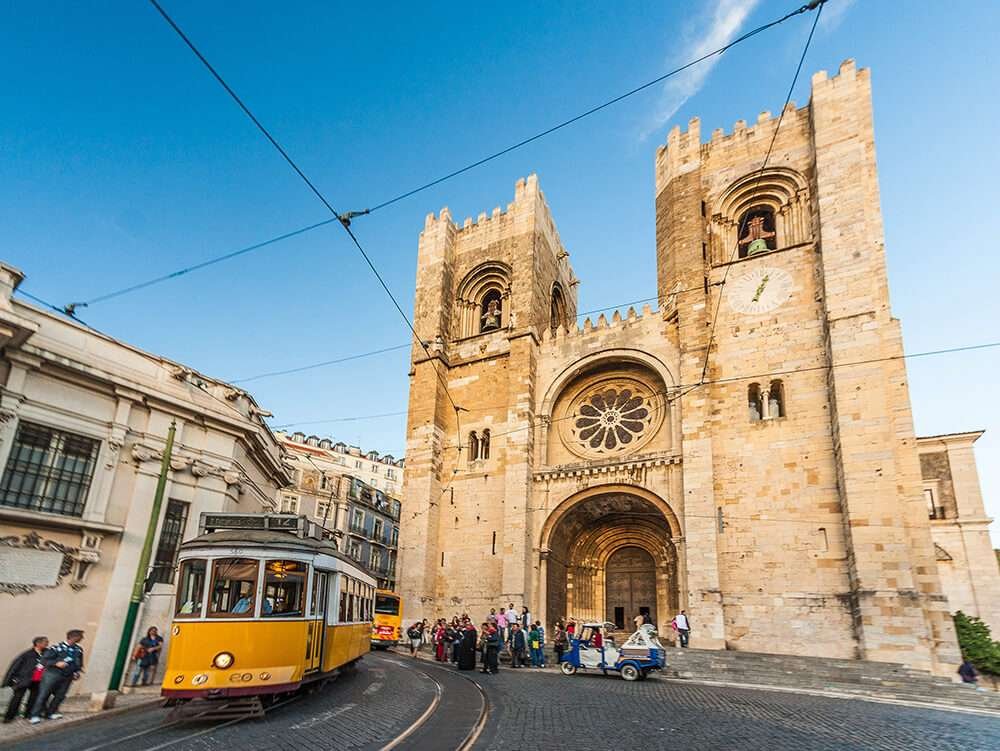
1. Architecture of Lisbon Cathedral
Before entering the cathedral, take time to appreciate the striking exterior, which resembles a fortress rather than a church. The medieval-looking facade stands out with a rose window, mighty walls and two crenelated bell towers.
Lisbon Cathedral has been rebuilt several times, resulting in a great mix of architectural styles. Looking closer, you can spot elements of Gothic, Neoclassical and Romanesque.
Tip: Step back a little and have your cameras ready, because when the iconic yellow tram passes right in front of Lisbon Cathedral, you're sure to get a postcard-worthy photo.
2. Wander through the Cathedral
Enter the cathedral and allow yourself a moment to take in the rather cavernous and gloomy interior. Walking around beneath the vaulted ceilings and Gothic arches, you may be surprised at how simple and plain it is compared to other churches in the city. However, it is the architectural details that will impress you.
Note the 17th-century Baroque sacristy, which houses a shrine and is decorated with poly chrome marble, sculptures of Portuguese saints and an extraordinary stucco ceiling.
Walk to the baptistery, adorned with tile panels and a gilded wrought iron railing, and look for the font where the patron saint of the city of Lisbon, St. Anthony of Padua, is said to have been baptized in 1195. If you go to the wall of the staircase leading to the high choir, you will see the famous cross of Saint Anthony.
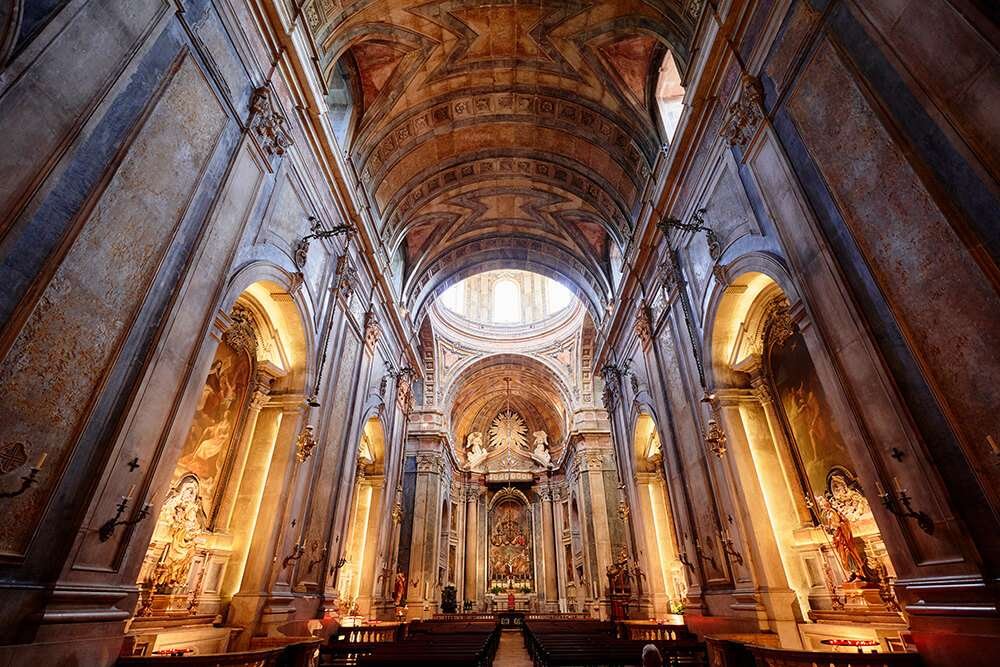
3. Admire the Chapels
Be sure to admire the nine radiant chapels dedicated to important Portuguese figures. Of particular importance are the neoclassical main chapel, where King Alfonso IV and other of his family were buried, and the chapel of St. Ildefonso, with a wonderful clay nativity scene created by the sculptor Joaquim Machado de Castro.
Equally impressive is the Bartholomew Joanes Chapel, with an astounding series of Renaissance paintings depicting scenes from the life of Jesus Christ.
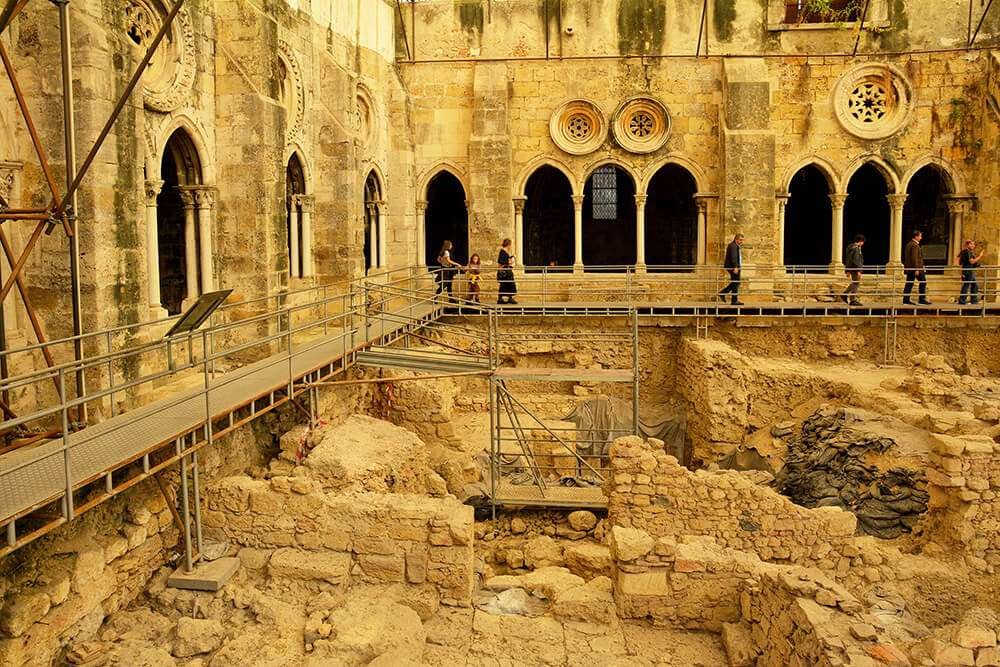
4. Explore Archaeological Excavations in the Cloister
On the east side of Lisbon Cathedral is also the cloister, commissioned in the 13th century by King Dinis of Portugal. Although the Gothic-style cloister was damaged in an earthquake, the remnants are worth discovering. There are several tombs and sarcophagi with the remains of important personalities.
Noteworthy are the ongoing archaeological excavations. The underlying parts of a former mosque wall have been uncovered, as well as a section of Roman road and remains of the Visigothic occupation. Archeological finds from the Moorish, Visigothic, and Roman eras were discovered in the cathedral's courtyard and are now on display for visitors.
5. Take a look at the Patriarch’s Dressing Room
This is the chamber that the Patriarch used to dress. Today, you can see here impressive works of art, such as the Baroque altarpiece in carved gilt wood, the Patriarchal Cross, the magna cape and the sculpture of Saint Anne with Virgin Mary.
6. Head to the High Choir
Make your way to the High Choir for one of the most captivating views of Lisbon Cathedral.
From here you can overlook the entire nave up to the chancel and catch a glimpse of the lovely rose-window that adorns a Romanesque facade.
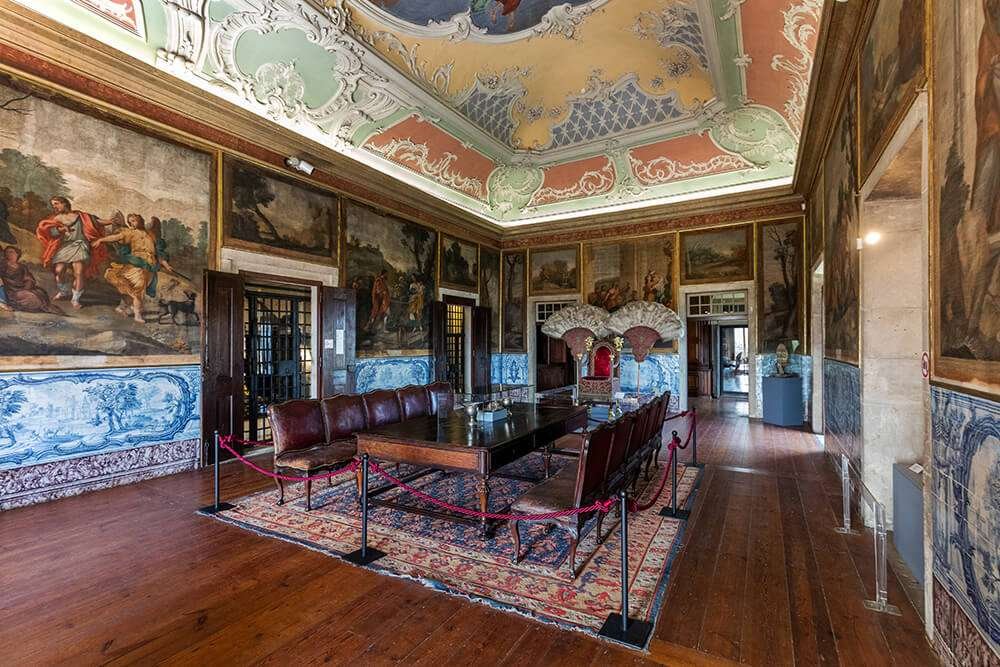
7. Visit the Treasury
Another highlight of the Lisbon Cathedral is kept inside the Treasury. You can find it on the second level of the cathedral. Head up and visit the four chambers filled with precious jewels, vestments, and relics from Portuguese history.
- 1st room: The “Relics and Reliquaries” room showcases reliquaries from the Cathedral collection, focusing on the two reliquaries of St. Vincent.
- 2nd room: This room, named "The Liturgical Year", is dedicated to the liturgical calendar introduced by the Catholic Church. On display are, among other things, sculptures and paintings that highlight some of the Christian mysteries.
- 3rd room: The splendid “Chapter Room”, built in the 18th century over the sacristy of the church, houses, among other things, the patriarchal tiara, the Gestatorial Chair and the Flabellum.
- 4th room: In this room, you can see part of the present bibliographic and archival collection of the Cathedral.
8. Attend a Mass or a Celebration
There is a room reserved for prayer, to which all visitors have free access.
Masses are held every Wednesday at 18:30 and every Sunday at 11:30 in Portuguese.
For detailed information about Celebrations, please check the official website.
Entrance, Tickets and Tours to Lisbon Cathedral
- Entrance: The church is open from Monday to Saturday. It is closed on Sundays and Holy Days. November to May: from 10:00 to 18:00. June to October: from 9:30 to 19:00.
- Tickets: Entrance fee to Lisbon Cathedral is 4€. Free entrance for children up to the age of 6. The ticket includes a visit to the Treasury, the ascent to the High Choir and a walk through the naves and cloisters of the cathedral. For further information, please check the official website.
- Tours: There are many walking tours that include the Lisbon Cathedral.
- Travelers' Tips: Wish to visit Lisbon Cathedral and get to know the historic Alfama district and some of Lisbon's most famous tastes on your own? Then we recommend the self-guided tour "Taste of Alfama" by YourMobileGuide.
How to Get to the Lisbon Cathedral?
From Praça do Comércio: You can reach Lisbon Cathedral after a small 7-minutes walk.
From other parts of the city, take the Tram 28E or tram 12 and exit at stop Limoeiro. The tram 28E passes right in front of the cathedral.
Frequently Asked Questions about Lisbon Cathedral
Lisbon Cathedral is located in the historic Alfama neighborhood, a 5-minutes walk from the popular Miradouro de Santa Luzia vantage point. The address is Largo da Sé, 1100-585 Lisboa.
Lisbon Cathedral is the oldest church of Lisbon. As the seat of the Patriarchate of Lisbon, it is the most important cathedral of the city. The medieval church is famous for its fascinating mix of different architectural styles. Furthermore, it holds the relics of Saint Vincent, excavated Roman ruins, and the impressive Treasury.
Entrance fee to Lisbon Cathedral is 4€. Free entrance for children up to the age of 6. The ticket includes a visit to the Treasury, the ascent to the High Choir and a walk through the naves and cloisters of the cathedral. For further information, please check the official website.
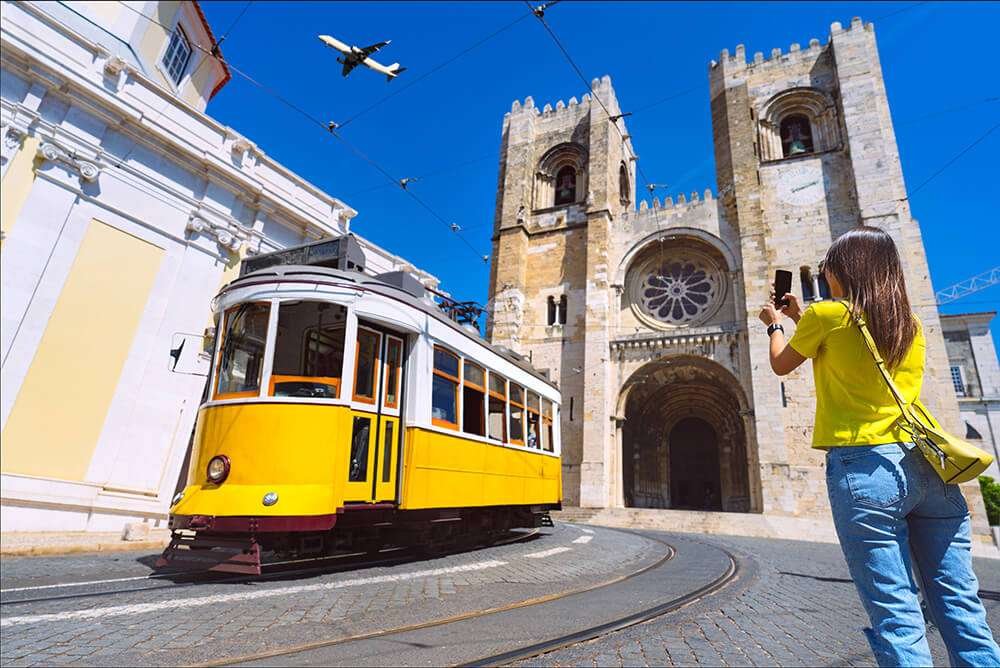
Historical Facts & Info about Lisbon Cathedral
Lisbon Cathedral or Sé de Lisboa (official: Santa Maria Maior de Lisboa) was first constructed in 1147 by Christian forces under King Afonso Henriquez, who defeated the North African Moors.
In order to build the cathedral, the main mosque, which was located on this site, was replaced. The church pushed religion to the center of the Portuguese community and became an important part of Portuguese society as it was the site for weddings, funerals and baptisms of the wealthy elite and noble classes.
Like many structures in Lisbon, it suffered damage from several earthquakes, especially the great one in 1755. Much has been renovated, restored and modified, resulting in a mix of Gothic, Modern and Romanesque architectural styles.
After an extensive renovation in the 20th century, the cathedral acquired its current medieval appearance. In 1910, Lisbon Cathedral was declared a National Monument.
During the ongoing excavations in the central courtyard of the monastery, initiated in 1990, layers from the Roman, Moorish, and Visigothic periods were uncovered.
Contact & Map
- Address: Sé de Lisboa, Largo da Sé, 1100-585 Lisboa
- Opening Hours: Open from Monday to Saturday. November to May: 10:00 – 18:00; June to October: 9:30 - 19:00
- Public Transport: By Tram 28E exit at stop Limoeiro
- Official Website: SeDeLisboa.pt/en

